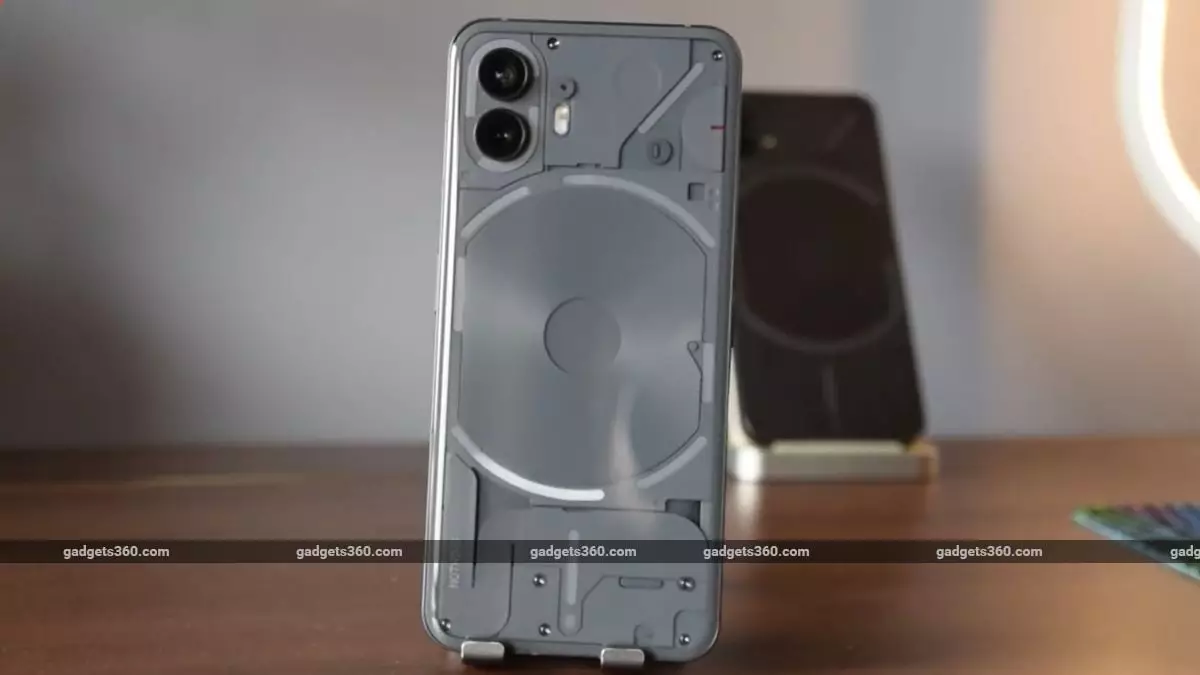Nothing Phone 3’s launch is stirring up a significant buzz in the smartphone market, primarily because of its drastic price hike. Doubled from its predecessor’s launch cost, the nearly Rs. 90,000 price tag sends a clear signal: Nothing is aiming to compete directly in the luxury flagship arena. But this move is a gamble that may alienate its initial fanbase, who appreciated the brand for delivering innovative design and solid performance at a mid-range price. While premium pricing often reflects advanced technology and build quality, the leap here feels more like a calculated risk to reposition the brand than a natural progression of value.
Carl Pei is known for his flair in marketing and disruption, but pricing at nearly twice the Nothing Phone 2’s entry point raises questions about the balance between ambition and accessibility. Is Nothing smartly evolving, or losing sight of the consumer base that fueled its rise? For a company banking on design novelty and smoother user experience, this overreach might undermine the very ethos that once distinguished it.
Innovations and Improvements: Genuine Evolution or Incremental Hype?
The Nothing Phone 3 is touted as the company’s first “true flagship,” boasting a 6.7-inch LTPO OLED display with 1.5K resolution and an impressive 120Hz refresh rate. These specifications suggest adherence to current flagship benchmarks, but they’re hardly revolutionary in a market populated by Samsung and Apple offering similar or superior screens at comparable or lower prices.
The real center stage lies in the phone’s camera setup. A triple 50MP configuration, headlined by a periscope telephoto lens with 3x optical zoom, is ambitious for a brand known for challenging norms rather than chasing megapixel wars. Coupled with the Snapdragon 8s Gen 4 chipset, claimed to deliver significant gains in CPU, GPU, and NPU performance, the phone projects solid competence, promising smoother multitasking and superior gaming experiences.
Yet, the question remains: do these improvements justify the price surcharge, or is Nothing banking too heavily on spec sheets without sufficiently transforming the user experience? Enhanced raw performance is welcome, but it can’t alone elevate a device beyond the status of “just another premium phone.”
Design Philosophy: From Glyph Interface to Glyph Matrix
Nothing’s original Glyph Interface was a defining stylistic and functional trait—a quasi-exclusive identity. The shift towards the new Glyph Matrix hints at the brand’s need to refresh its aesthetic vocabulary. While this could signal innovation in visual interactivity, it could also disappoint loyalists who valued the uniqueness of the previous design.
This move indicates a company wrestling with its desire to remain distinctive while appealing to a broader, more sophisticated audience. The risk is in losing the quirky charm that set Nothing apart in the first place, diluting its identity in a sector already saturated with flagship models.
Longevity Promises: An Often Overlooked Gesture
One of the few aspects where Nothing seems genuinely committed to progression is the extended software support promise: five years of Android updates and seven years of security patches. In an era where sustainability and device longevity are increasingly pivotal, this stance deserves praise. Most flagship phones offer shorter supported lifespans which contribute to tech waste and consumer frustration.
This long-term vision aligns with a responsible, consumer-first ethos, showing that Nothing seeks to nurture meaningful relationships with its users, not just profit from their initial purchase. However, this promise alone isn’t enough to overshadow the ambiguity around price and actual usability.
Battery and Charging: Catching Up or Leading?
The leaked 5,150mAh battery with 100W wired fast charging, along with wireless and reverse wireless charging, meets current high-end standards. It addresses expectations for endurance and quick topups, crucial as phones become more power hungry due to advanced displays and processing demands.
But again, these features are table stakes in the flagship domain rather than distinguishing factors. Here, Nothing is playing catch-up rather than trailblazing new paths in battery innovation, making the push for premium pricing more perplexing.
Final Thoughts: Cautious Optimism Amidst Strategic Blind Spots
The Nothing Phone 3 embodies a curious mixture of promising engineering and risky strategic decisions. Its technical improvements and software longevity are commendable and in tune with progressive consumer values. Yet, the steep price rise and design repositioning suggest an identity crisis—one balancing between maintaining its disruptor roots and climbing the exclusive ladder of flagship contenders.
For a young company craving relevance and respect from discerning tech enthusiasts, this launch could either cement Nothing’s status as a serious player or alienate a significant portion of its community. Amid relentless competition, success will depend on how well Nothing justifies its price with innovations that truly resonate beyond specs, appealing to emotions as well as logic.
In an age where smartphone choices seem increasingly commodified, the Nothing Phone 3 challenges us to reconsider what makes a flagship genuinely exceptional—and whether bold branding can make up for lost accessibility.


Leave a Reply